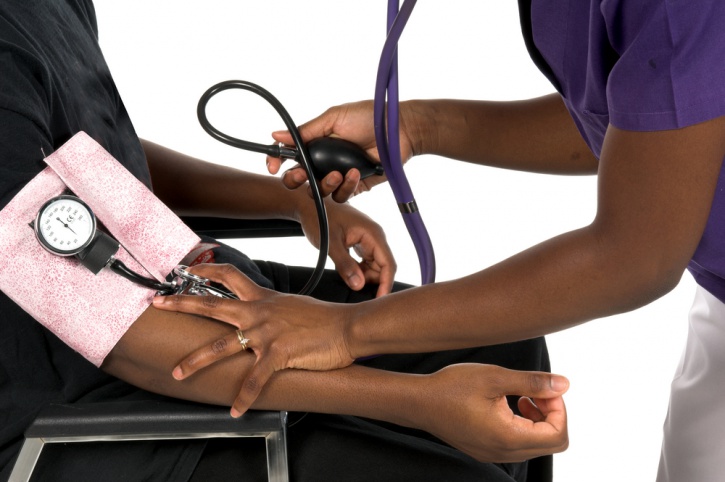
Measuring your own blood pressure is a good way to take part in managing your own health and recognizing changes. Your doctor can use your record of measurements to see how well your medicine is working to control your high blood pressure.
RELATED: How To Check Your Blood Pressure At Home
Because blood pressure monitors are available widely and without a prescription, home monitoring is an easy step you can take to improve your condition. Before you get started, it’s important to know the right technique and to find a good home blood pressure monitor. This step-by-step guide for using a home blood pressure monitor can help.
Choosing a Monitor
You have the choice of a manual home blood pressure monitor or a digital one. Each has pros and cons, although digital blood pressure monitors are easier to use and to read because readings for both your systolic (when your heart is pumping) and diastolic (when it is at rest) levels flash on the screen. If you own a manual monitor with a manometer (the blood pressure gauge) and stethoscope, practice with a member of your medical team first. If you have a digital monitor, take it to your doctor’s office to make sure it’s calibrated properly.
RELATED: 5 Things to Know About Blood Pressure Before It’s a Problem
How to Check Blood Pressure at Home
Step 1: Relax
If you have hypertension, you may need to take your blood pressure at home twice a day — and you’ll want to be relaxed when you do it. Try to take your reading around the same time every day — an hour after you wake up and an hour before bed, for example. Just avoid any stimulants, such as caffeine, tobacco, or alcohol, for at least 30 minutes before a reading. You should also wait 30 minutes after exercising. Finally, empty your bladder before you begin.
Step 2: Take a Seat
Sit down in a comfortable chair next to a desk or table where you can place your home blood pressure monitor. Rest quietly, without talking, for 5 to 10 minutes before you start. Make sure your back is supported, and that your feet are comfortably on the floor with your legs uncrossed. Take your pressure on your non-dominant arm. Lift that forearm to heart level and support it on the desk so it stays comfortably elevated. Open your palm and face it up.
Step 3: Find Your Pulse
Locate your pulse by gently placing your index and middle fingers on the inside of the crease in your elbow. Press down gently and slide your fingers slowly over the area until you feel rhythmic pulsing. This is your brachial artery, the artery that runs from your shoulder to the bend in your elbow. Some digital home blood pressure monitors will tell actually you your pulse rate. If yours does, skip this step.
Step 4: Put on the Cuff
Wrap the cuff around your arm so it’s snug but not too tight. As a rule of thumb, you should be able to slip one finger under the cuff. Place the cuff against your skin, not over your clothing. Lloyd notes not to just push your sleeve up to the top of your arm — doing so forms a tight bend around the upper arm. The bottom of the cuff should be about one inch above the bend, or crease, in your elbow. Look for an arrow or line on the cuff that should be lined up with (or point to) the pulse from your brachial artery.
Step 5: Take Your Pressure
Hold the manometer, in your non-dominant hand. Most models have a built-in stethoscope, but if you’re using a detached one, place it over the spot where you located your pulse. With your dominant hand, hold the bulb and close the valve by turning the screw in a clockwise direction, then squeeze the bulb quickly to inflate the cuff until the indicator in the manometer is about 30 points higher than your expected systolic number — you shouldn’t be able to hear your heartbeat through the stethoscope at this point. Watch the gauge carefully as you slowly open the valve, and remember the number it reads when you hear your first beat; this is the systolic, or top, number of your blood pressure. As you continue to slowly let out the air, look for the number on the gauge at the moment when you no longer hear the beat; this is the diastolic, or bottom, number of your blood pressure. Finish deflating the cuff. A digital blood pressure monitor can be semiautomatic (you pump up the cuff with a bulb) or fully automatic (you press a button to inflate the cuff instead of using a bulb). Follow the manufacturer’s instructions to start the reading. A digital blood pressure monitor will usually beep when it reads your pressure and display the two numbers, your systolic and diastolic pressures, on its screen.
RELATED: The Best Way To Prevent High Blood Pressure
Step 6: Record Your Blood Pressure Numbers
To help you better manage your daily blood pressure readings, write down both your systolic and diastolic pressures and the date and time in a log. Organize your records so both you and your doctor can use them to treat and manage your condition. If a reading seems unusual, you may want to repeat it to be sure. Wait at least a minute, then take off the cuff and start over — don’t just re-inflate it. Some doctors recommend taking two to three readings each time.
Step 7: Store Your Monitor
Keep your home blood pressure monitor in a safe, dry, and cool place, and store it so the tubing isn’t twisted. Check your home blood pressure monitor periodically for cracks or leaks in the tubing. Once a year, take it to your health care provider to see if it needs recalibrating. With guidance and a little practice, you’ll learn how to use your home blood pressure monitor, making this part of managing your hypertension one of the easiest.









